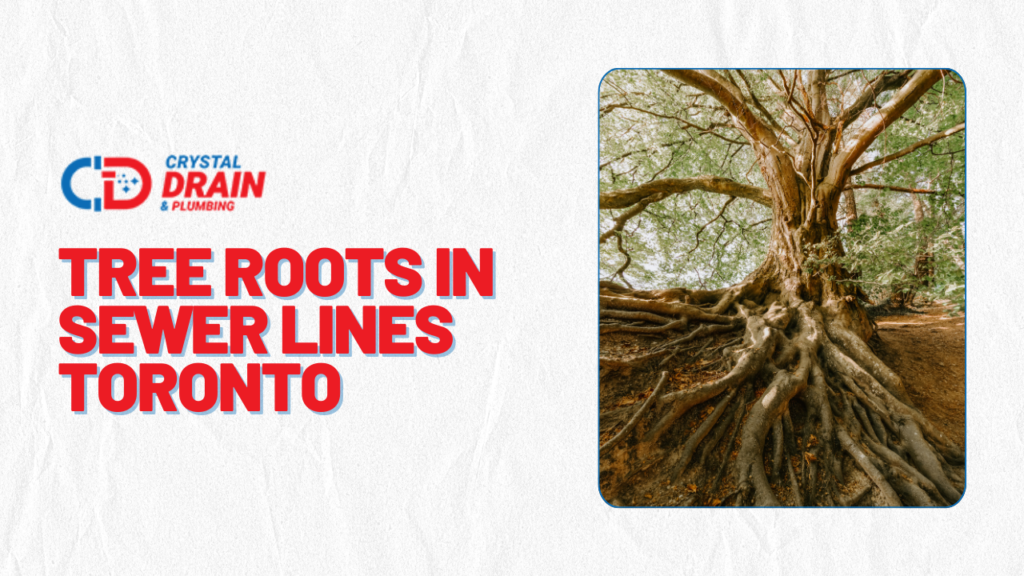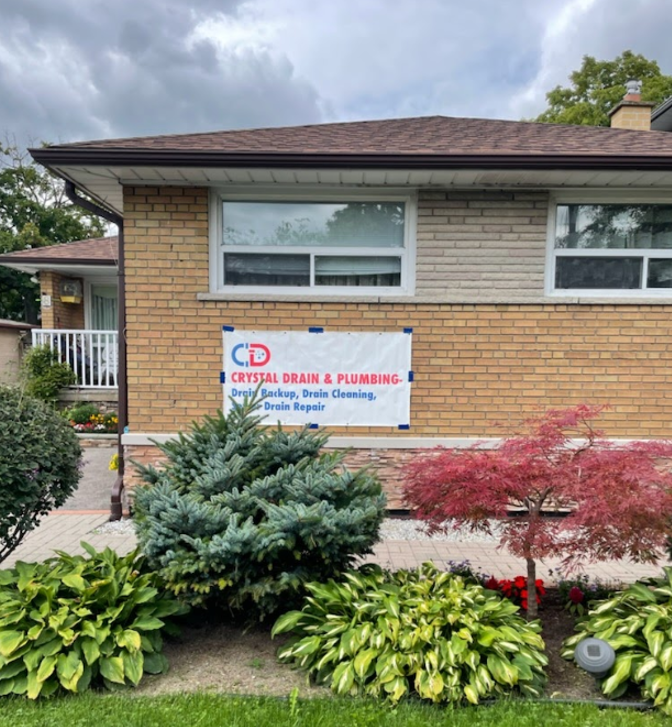Tree Roots In Sewer Lines Toronto

Are tree roots creeping into your sewer lines in Toronto and causing chaos beneath your property? At Crystal Drain & Plumbing, we dive into the reasons behind these underground invasions, assess the potential risks to your home, and provide robust solutions to safeguard your plumbing system. Join us as we explore how to combat and prevent tree root intrusions effectively in Toronto!
Why Do Tree Roots Invade Sewer Lines?
Tree roots naturally seek out water sources to sustain growth, and the warm vapor from your sewer lines offers an enticing target. Cracks or loose joints in the pipes emit vapor, attracting tree roots towards these vulnerabilities.
Once roots find a crack or joint, they penetrate the pipe seeking the moisture inside. Over time, these roots can grow inside the sewer lines, creating blockages by trapping household debris such as fats, oils, and tissue paper. This is a common issue in Toronto, where mature trees often coexist with aging infrastructure.
What Are The Signs of Tree Root Blockage
- Slow Draining: Toilets, sinks, and bathtubs that drain slower than usual can indicate blockage caused by tree roots.
- Frequent Clogs: If recurring clogs occur, especially in the lowest points of your plumbing like basements or ground-floor toilets, it could be a sign of root intrusion.

- Gurgling Sounds: Unusual noises, like gurgling or bubbling coming from your toilet or drains, often suggest that roots have disrupted the normal flow of water.
- Changes in the Lawn: Sudden, unexplained verdant patches or dips in your yard could be highlighting where roots are affecting underground pipes.
- Bad Odor: Foul or sewage-like smells emanating from your drains can indicate that tree roots are obstructing the flow and causing waste to back up.
- Sewage Backups: If raw sewage backs up into your home during periods of heavy water usage or rainfall, it’s a critical sign that tree roots may have severely blocked or damaged your sewer lines.
What Are the Costs of Ignoring Tree Root Intrusions?
- Expensive Repairs: Ignoring root intrusions can lead to cracked or burst pipes, necessitating costly repairs or complete replacement of plumbing lines.
- Water Damage: A fully blocked sewer line can cause water to back up and overflow, leading to extensive water damage to floors, walls, and personal property.
- Health Risks: Sewer backups into the home create unsanitary conditions, posing health risks from exposure to bacteria and mold growth.
- Increased Maintenance Costs: Frequent clogs and reduced system efficiency demand more frequent maintenance, adding to overall costs.
- Decreased Property Value: Ongoing plumbing issues and potential damage can diminish the value of your property if not addressed promptly.
How To Prevent Tree Root Intrusions?
- Choose the Right Trees: Plant trees with less aggressive root systems, and consider the size and growth pattern of the tree roots before planting near plumbing lines.
- Regular Inspections: Have a professional inspect your plumbing system regularly to detect any potential root intrusions early on.

- Physical Barriers: Install barriers made of metal or specially designed slow-release chemical products to deter roots from growing into pipes.
- Proper Planting Distance: Ensure trees are planted at a safe distance from your home’s plumbing lines to prevent roots from reaching the pipes.
- Maintain Sewer Lines: Keep your sewer lines well-maintained and clear of obstructions, which can attract tree roots searching for nutrients.
- Replace Old Pipes: Consider replacing old, cracked, or damaged pipes with newer, root-resistant materials such as PVC or ABS, which are less prone to intrusion by tree roots.
Professional Tree Root Removal from Crystal Drain & Plumbing
Crystal Drain & Plumbing offers a range of specialized techniques designed to effectively address and resolve blockages caused by tree roots in sewer lines:
Hydro Jetting:
This powerful technique employs high-pressure water jets to both clear any existing blockages and cut through invasive tree roots. It’s an efficient and thorough method that not only resolves immediate issues but also helps to maintain the health of sewer pipes by preventing future intrusions.

Mechanical Removal:
Utilizing advanced machinery, this method involves the precision cutting and extraction of tree roots from sewer lines. The equipment is specially designed to reach deep into the pipes, ensuring that all roots are removed, which restores and maintains the normal flow within the sewer system.
Chemical Treatment:
Crystal Drain & Plumbing employs environmentally safe yet potent chemical agents such as rock salt and copper sulphate, which are introduced into the sewer system. These chemicals effectively dissolve tree roots and create a hostile environment to inhibit future root growth.
Clear Pipes, Clear Mind: Choose Crystal Drain & Plumbing!
Ensure your home’s plumbing flows smoothly by choosing Crystal Drain & Plumbing in Toronto for all your plumbing needs. Our reliable and efficient services guarantee peace of mind and a hassle-free experience, keeping your systems running at their best. Trust us to safeguard your Toronto home from any plumbing predicament with professionalism and expertise.
FAQs About Tree Roots In Sewer Lines
The best methods to remove tree roots are professional removal techniques such as Hydro Jetting, which uses high-pressure water to cut through and clear roots, Mechanical Root Removal, which physically cuts roots away with specialized equipment, and Chemical Treatments that inhibit further root growth while clearing existing blockages.
Yes, if left unaddressed, tree roots can severely damage sewer lines by causing cracks, breaks, and even complete collapses. It’s critical to address these issues promptly with professional repair or replacement to prevent more extensive and costly damage.
It’s wise to have your sewer lines inspected annually, especially if you live in an area with many trees. Regular inspections can help catch and address root intrusions early before they lead to significant damage or severe blockages.
It is not recommended to attempt removing tree roots yourself as this requires specialized equipment and skills. For safe and effective removal, it’s best to contact professional plumbers.
